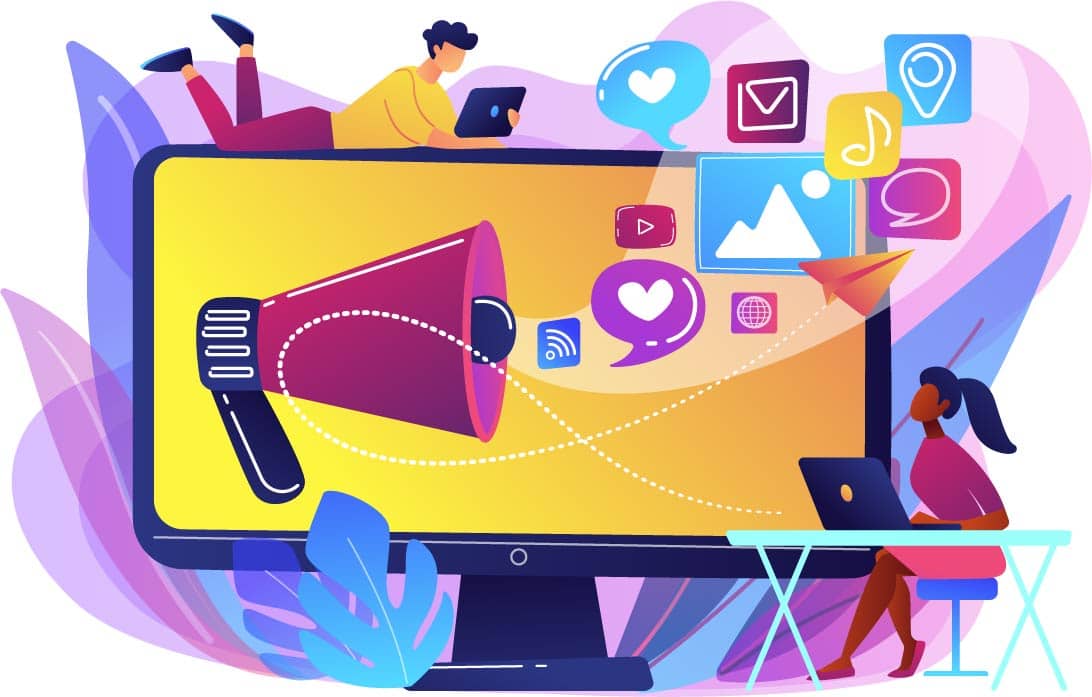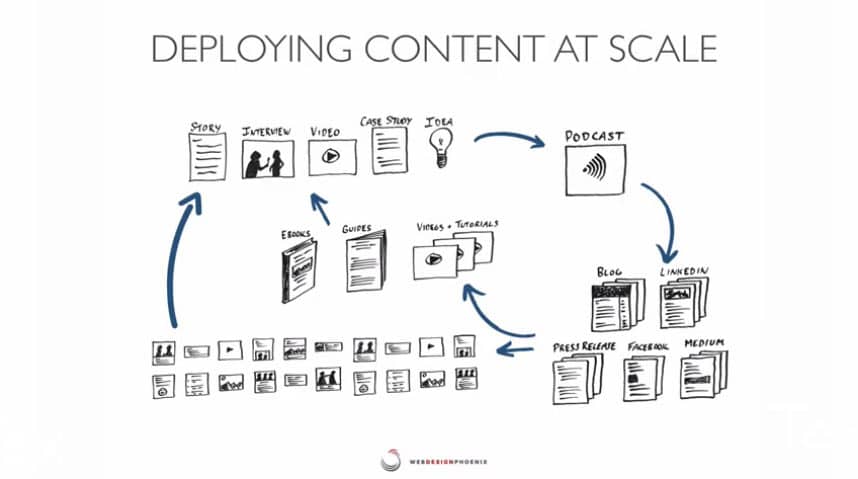How to Build Yourself a “Content Machine”
Creating content is hard, but documenting your journey is actually pretty easy. If you’ve got a system in place, you can roll out tons of informative and compelling content to build brand and audience around whatever you’re passionate about.
The key is to produce enough of it to stay top of mind and bring any effect. Another challenge is to produce content in the places and in the mediums that your audience prefers – meeting them where they are.
Here’s how it works…
It Begins with an Idea
Consider the questions and problems that your audience is dealing with. Now go develop video or audio content around that idea. Video is hard, but if you’ve got good video, you can parse out the audio and that becomes your podcast.
Audio is super important because Alexa, Google Home and similar technology is continuing to get more and more important in terms of organic searches. Audio is also a passive way to consume content. You can be driving down the road or working out listening along – whereas video you have to be watching.
So, it’s really systematic way of producing content. You can have simple conversations or interviews and turn it into a podcast.
Maybe you’d rather listen to the podcast?
Transcribe for Long-Form Written Articles
With your podcast complete, now you can run that through transcription. Transcription is not a perfect science today, but it works, and it provides a starting point. Somebody can take that written content and turn it into a very logically formatted, well-written long-form article around whatever content that you produced for the podcast. There’s opportunity to add in tips and thoughts to deliver some extra value along the way. If you’ve got a decent writer on your team, it’s very doable.
That long form article goes on your website’s blog, and in certain social media outlets. It’s got to live in the places where people are consuming the content.
LinkedIn is awesome for long-form articles. Organic reach on LinkedIn is really good right now – when somebody Google’s something, they may not get your website first. They’ll get LinkedIn, which gets to the person that wrote the article, which it turn gets to the company, right? So LinkedIn and Medium are great for long-form written articles. Facebook is okay, but not as great for long posts.
Amplify Your Articles
So, you’ve got some articles now. Each of these articles, especially the blog post, is living on your website.
Now it’s time to amplify through contextual social media posts. I mean that the introduction to the content is contextual for the platform that they’re on. Links lead back to your article and drives awareness to your ideas and traffic.
Maybe you want to compile a few solid articles into your email newsletter. Either way, leverage your channels to tell people to consumer your stuff.
Micro Content Like Halley’s Comet
Digging a level deeper, maybe there were different important topics that we talked about in the podcast/article. We parse that out and turn those into micro pieces of content. These can be little video clips, quotes, tips, or maybe paragraph-long type stuff combined with some interesting photos – smaller pieces of content related to the longer form content.
Each of these micro pieces get repurposed and posted onto social platforms that matter.
So, one video or one podcast turns into perhaps dozens of pieces of content and many, many more amplification posts with unique context. You get this sort of like Halley’s Comet effect. Your video or podcast is the starting point, and then you have a trail of stuff that gets scheduled out over a long period of time.
So long as the starting point – the original idea – is revolving around something that is useful/helpful/interesting to our target audience, everything that comes after will fall in line.
Get Some Feedback from the Tribe
As we schedule all these posts, now it’s time to engage with the audience. We need to notice where the comments are, what people are thinking, and what stuff resonated the most. This is the feedback that will inform the future stuff that we want to talk about and questions we want to answer. Let’s do more of what’s working and less of what isn’t.
Build Out Some Premium Content Offers
Okay, the real sexy ending to this story are what we call premium content offers. PCOs are ebooks, white papers, and higher value items like that.
Sales Tools
Premium pieces of content can be leveraged in a sales environment. For example, let’s say somebody reaches out to Web Design Phoenix where SEO is top of mind. Of course, we can have an initial exploratory conversation to learn about their pains, challenges, goals, etc. After the session, we can easily follow up with an email recap along with our “How to SEO” ebook. It’s just the basics of SEO, but a lot of people don’t have the first clue about this stuff. We’re able to deliver a ton of extra value and helpfulness in-between meetings.
Conversion Bait
PCOs are hugely valuable for conversion on our website as well. The website is the focal point. Topics begin very broadly, providing the opportunity for visitors to dive deeper into areas which are expert in. At the end of each of those “rabbit holes” is a premium content offer.
Of course, grabbing the offer is not 100% free because they’re trading their contact information and moving into our ecosystem. From there, we’re able to continue to assist, stay top of mind, and help them along in their decision-making process. Hopefully, they’ll be ready at some point to open a dialogue and begin working together.
Bring it Full Circle and Reverse Engineer
Bringing it all full circle, if we understand our audience, and the answers we’d like to provide them for their most urgent questions, we can reverse engineer our content creation. We map out the premium content offers we want to end up with at each stage of the buying process. Then we go and run podcast interviews, write articles around those subjects. While we’re producing content, we’re also building our PCOs.
In the end, the system is all about efficiently producing high quality content for our target audiences, meeting them in the places and through the mediums they prefer, and helping them along in the buying process.
Good luck!




